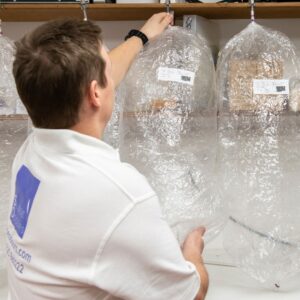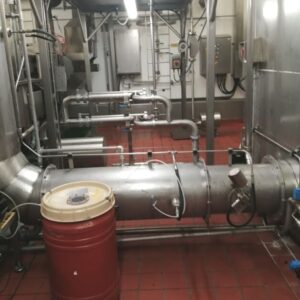3 STEPS TO EFFECTIVE ODOUR CONTROL

[vc_row][vc_column][vc_column_text]
3 STEPS TO EFFECTIVE ODOUR CONTROL
[/vc_column_text][vc_column_text]Many industries and businesses are required by law to minimise odour emissions. If you operate a permitted site, your permit will include odour control requirements. The goal is to limit odour pollution that may be harmful or offensive to neighbouring communities. If you fail to comply with these regulations, you may face fines, legal action and loss of reputation. With this in mind, Silsoe Odours outlines three steps to control your odour emissions efficiently and cost-effectively.[/vc_column_text][vc_separator][/vc_column][/vc_row][vc_row][vc_column][vc_column_text]
STEP ONE: Effective Odour Planning
[/vc_column_text][vc_column_text]As with every project, having a great plan will help you achieve your objectives. Effective odour planning involves identifying sources of odours and implementing measures to mitigate their impact. When considering odour control, look at everything that may affect your impact on the neighbouring community. How you do this will vary. Your approach will depend on the scope of your site and whether it is a new build or a re-development. However, in all cases, data is key.[/vc_column_text][vc_column_text]
Using Data for Odour Control
[/vc_column_text][/vc_column][/vc_row][vc_row][vc_column width=”1/3″][vc_column_text]

Odour sampling provides data that helps you understand the magnitude and characteristics of odour emissions
[/vc_column_text][/vc_column][vc_column width=”2/3″][vc_column_text]Consider every potential odour source and ensure you understand how it will behave. For existing point sources, you can conduct odour sampling. Our odour consultants will collect odour samples and analyse them. Subsequently, we will deliver results that help you understand the magnitude and characteristics of the odour emissions.
You can conduct odour dispersion modelling for new point sources or those you intend to alter. Dispersion modelling is a process of mathematical modelling. It predicts how odours will likely travel and their potential impact concentration. Our odour consultants can also modify and test input data to show you how modifying design will lessen the odour impact.
In both scenarios, the results will give you valuable data. Your equipment designer will need this to develop effective odour control processes and systems. Refer to step two to find out how.[/vc_column_text][/vc_column][/vc_row][vc_row][vc_column][vc_column_text]
Community Engagement
[/vc_column_text][vc_column_text]Engaging with your local community is essential to reduce odour nuisance for your neighbours. Be clear, transparent and accessible. Ensure residents understand your site’s operations, processes and potential odour sources. Highlight your plans for odour control measures and the importance of local input to the success of these measures. When you successfully engage the community in your odour management activity, you will reduce the number of potential complaints.[/vc_column_text][vc_separator][vc_column_text]
STEP TWO: Good Odour Abatement Equipment Design
[/vc_column_text][/vc_column][/vc_row][vc_row][vc_column width=”1/3″][vc_column_text]

Good odour abatement equipment design is essential for odour control
[/vc_column_text][/vc_column][vc_column width=”2/3″][vc_column_text]In step one, you acted to ensure you understood the nature of your odour emissions. Odour dispersion models will also indicate where to direct effort and money to reduce odour impact. In step two, you can use this data to help design effective odour control measures appropriate for your specific odour sources. These could include technologies such as biofilters, scrubbers and other types of odour treatment equipment. Most well-designed operations also seek to contain odours within the building. Your odour abatement equipment designer should consider fast-acting doors, custom-made strip curtains and well-sealed buildings. You should also minimise exposed surface areas and contain odour sources wherever possible. Considering potential odour issues at this stage is time and cost-effective. Once an odour problem arises, it becomes a much more significant challenge.[/vc_column_text][/vc_column][/vc_row][vc_row][vc_column][vc_separator][vc_column_text]
STEP THREE: Ongoing Odour Monitoring
[/vc_column_text][vc_column_text]So, you have implemented a well-designed, effective odour control system. Now you must maintain it.
First, put into place best practices to support your ongoing permit compliance. When you ensure good operational and management practices, you can help prevent odour nuisance. For example, inspect fans daily, keep floors clean and doors closed.[/vc_column_text][/vc_column][/vc_row][vc_row][vc_column width=”1/3″][vc_column_text]

Odour monitoring staff must complete odour sensitivity testing in line with EN13725
[/vc_column_text][/vc_column][vc_column width=”2/3″][vc_column_text]You should also nominate specific staff members to assess odours daily. When you keep excellent records in this way, you can react quickly to any problems. Not only that, but you will be able to show the regulator a history of your commitment to odour control. Do not forget that odour monitoring staff must complete odour sensitivity testing. In doing so, they will comply with European odour standard BSEN13725:2022.
It is also sensible to appoint an experienced, independent odour consultancy to support your odour management activity. We can conduct regular odour sampling and surveying, highlighting any issues promptly. In this manner, you can ensure you comply with your operating permit and odour requirements.[/vc_column_text][/vc_column][/vc_row][vc_row][vc_column][vc_separator][vc_column_text]
SUPPORT WITH ODOUR CONTROL
[/vc_column_text][vc_column_text]If you want to learn more about how to control odours, please speak to one of our odour consultants. We can help you plan for and monitor odour emissions. Plus, we are happy to discuss all your odour challenges. So, if you would like to contact the team, click the button below or call us on 01525 860222. You can also follow us on LinkedIn, Twitter and Facebook.[/vc_column_text][vc_btn title=”Click here to ask our team about odour control” color=”primary” size=”lg” align=”center” link=”url:https%3A%2F%2Fsilsoeodours.com%2Fcontact-us%2F|||” button_block=”true”][vc_separator][vc_column_text]
Article updated 1st March 2023
[/vc_column_text][/vc_column][/vc_row]

